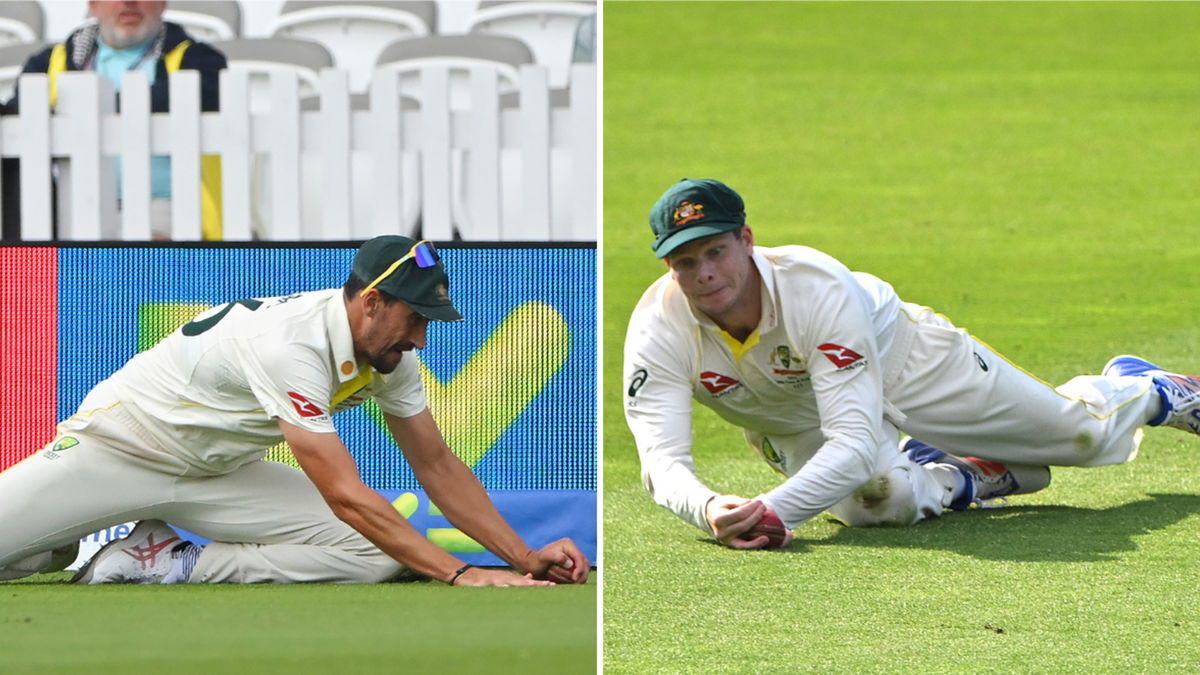
There was a moment of controversy on the fourth evening at Lord’s in the second Ashes Test, with an attempted catch by Mitchell Starc of Ben Duckett ruled not out. Here’s why, according to the Laws of Cricket.
You can bet on the 2023 Ashes with our Match Centre partners, bet365.

The incident occurred shortly before stumps, with Duckett and Ben Stokes putting on a recovery stand after Australia had claimed four wickets with the new ball. Returning to the short-ball ploy that had proved effective for both sides in the game to this point, Cameron Green delivered a high bouncer to Duckett, with the opener unable to control an attempted uppercut.
The ball flew fine to Starc at third man, with the left-arm quick catching the ball close to the boundary and celebrating.
Australia celebrated and Duckett initially set off for the pavilion, but was asked to wait for the decision to be checked. While Starc had initially taken the catch some distance off the turf, replays revealed he had pressed the ball to the ground as he slid, and the dismissal was quickly overturned.
While there was significant disgruntlement from some at the decision, the laws are clear on the matter. A catch is only complete once a player obtains control over their own movement, and Starc, sliding along the ground, was not. The ball clearly touched the ground, with Starc’s hand on top of the ball. Similar catches have been ruled not out in the past. New Zealand’s Kyle Jamieson saw a return grab ruled not out in a T20I against Bangladesh, with the ball also going into his hands cleanly before being put on the ground.
There were comparisons drawn to another controversial catch in the first innings, when Joe Root was given out caught by Steve Smith. Some felt the ball had touched the ground in that case as well. The key factor here is not whether Smith was in control – given he juggled the ball after the divisive moment, it is hard to argue that he was.
But in general, with TV umpire reviews, the interpretation is that if a player has fingers around or under the ball, then the ball is judged not to have touched the ground. It is generally agreed that touching the grass is not the same as touching the ground, and with the foreshortening effect making it hard to judge if a ball is on the ground or merely close to being so, the position of the fingers is often the decisive factor.
Well then…
What do we think of this one? 👀
Cleary grounded 😉 #EnglandCricket | #Ashes pic.twitter.com/bPHQbw81dl
— England Cricket (@englandcricket) July 1, 2023








